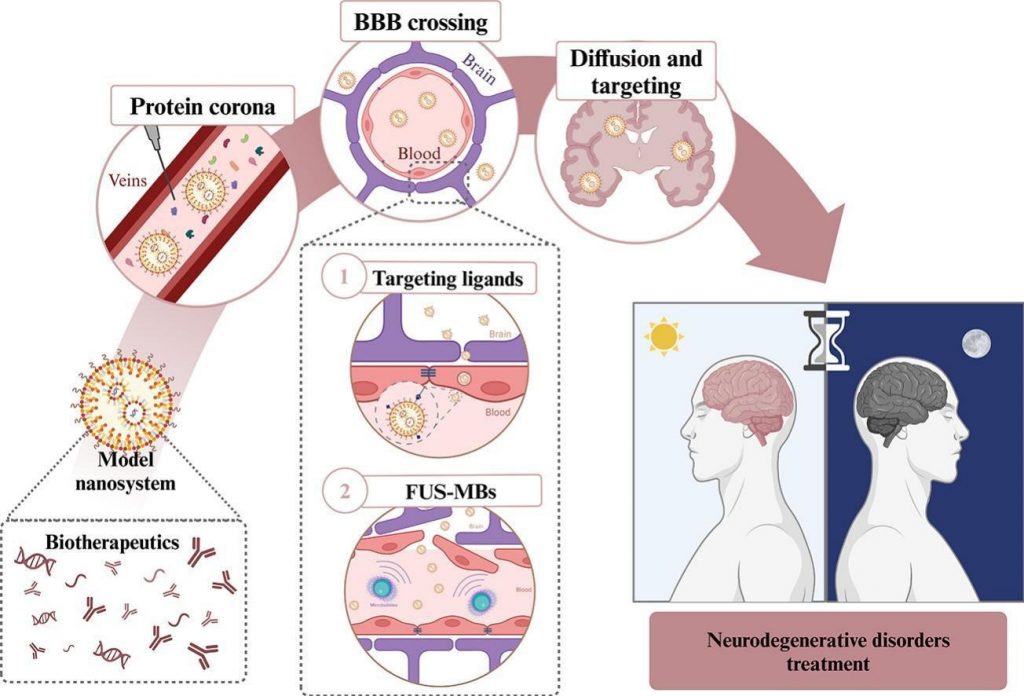- Publication: Laura Pineiro-Alonso, Inés Rubio-Prego, Alexandra Lobyntseva, Eva González-Freire, Robert Langer, María José Alonso, Nanomedicine for targeting brain Neurodegeneration: Critical barriers and circadian rhythm Considerations, Advanced Drug Delivery Reviews, Volume 222, 2025, 115606, ISSN 0169-409X, https://doi.org/10.1016/j.addr.2025.115606.
Highlights:
• Nanomedicine holds potential to improve the targeted delivery of biotherapeutics to the brain.
• Biotherapeutics are becoming key treatments for neurodegenerative diseases, such as Alzheimer’s disease.
• Tailored nanosystems represent an emerging solution to overcome the biological barriers that hinder brain delivery.
• Surface modifications and transient disruption of the blood-brain barrier are being explored to enhance brain delivery.
• Integrating circadian rhythms with nanotechnology offers a novel approach to optimizing brain-targeted therapies.
Abstract:
The development of novel therapies for central nervous system (CNS) diseases, particularly neurodegenerative disorders like Alzheimer’s disease (AD), is a critical global health priority. Biotherapeutics, such as monoclonal antibodies (mAbs) and RNA-based therapies, have shown potential for treating brain disorders. However, their clinical progress is limited by their difficult access to their brain targets. At the preclinical level, nanotechnology has been shown, to help these molecules overcome the biological barriers that imped their adequate brain delivery. This review highlights advances in this area and the challenges for the translation to the clinic. Key nanotechnology-based strategies, such as surface modifications utilizing endogenous protein corona, functionalization with targeting ligands, therapeutic ultrasound-mediated microbubble oscillation were particularly analyzed. Additionally, in line with the focus of the Special Issue, this review integrates the concept of chronotherapy, with a focus on AD treatment, highlighting the idea that, by aligning nanoparticle (NP)-based drug delivery with circadian rhythms, it may be possible to improve therapeutic outcomes. Finally, the article analyzes current strategies in CNS drug delivery in clinical trials and provides future directions within this frame, notably in the area of AD.
